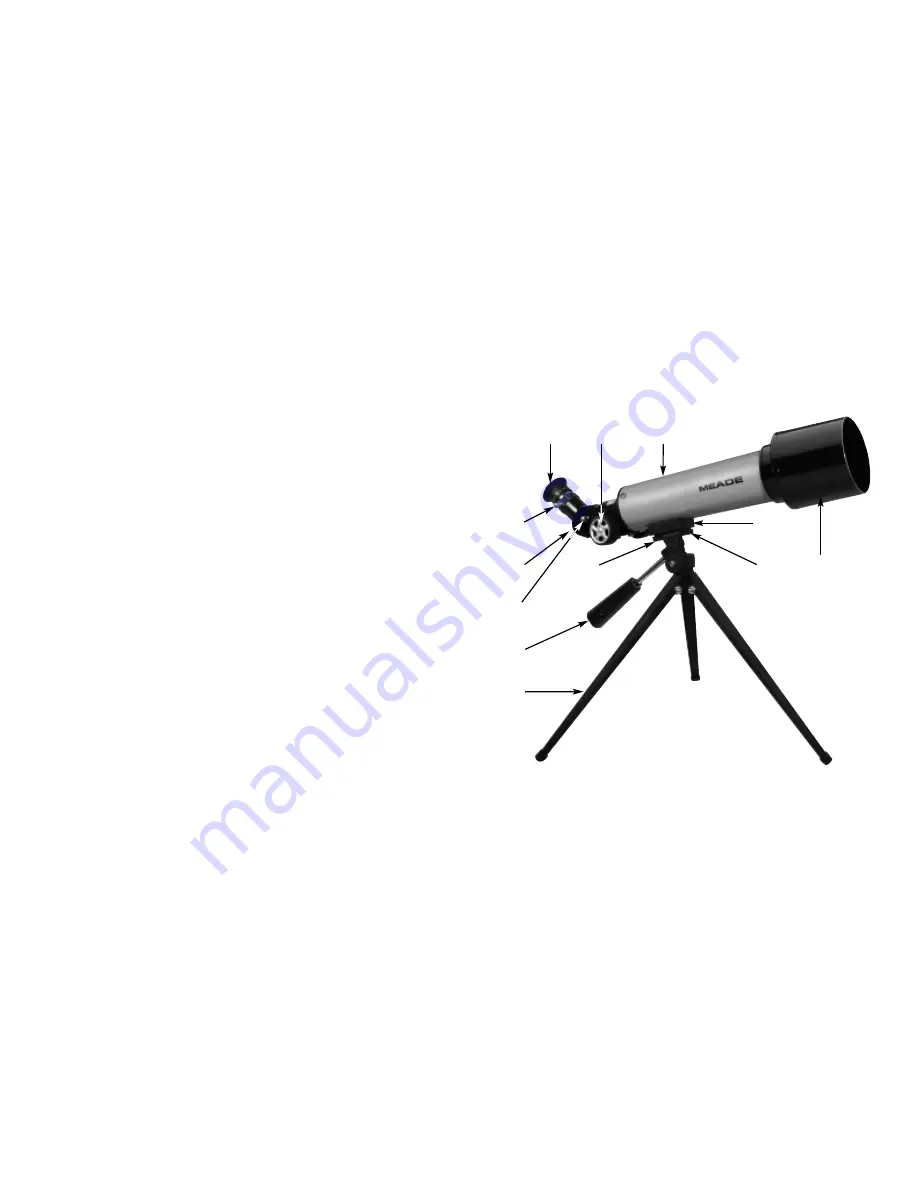
c
d
e
f
b
i
h
1)
g
j
1!
1@
1. Optical Tube
2. Focus
Knob
3.
Eyepiece
4. Eyepiece
Thumbscrew
5.
Roof Prism
6.
Diagonal Prism Thumbscrew
7.
Altitude Control Handle
8.
Tripod leg
9.
Tripod Securing Screw
10.
Tripod holder
11.
Tripod Platform
12.
Dew Shield
Meade 60mm Compact Refractor Telescope
Fig. 1: Telescope Features
4
1
in the upper atmosphere can cause the images to “shimmer” in the
eyepiece. Reduce power until the image steadies. Keep in mind
that a bright, clearly resolved, but smaller image will show far more
interesting detail than a larger, dimmer, fuzzy image.
7. A number of fascinating objects are visible through your Meade
60mm compact refractor:
•
Jupiter: Jupiter has cloud belts across its surface. It’s four major
moons change position around the planet each night. Jupiter has
cloud belts across its surface.
•
Saturn: Saturn’s ring system is an astronomical favorite.
•
The Moon: Our Moon offers craters, mountain ranges and fault
lines. The Moon is best observed during its crescent or half phase
when sunlight strikes the Moon’s surface at an angle. Resulting
shadows add a sense of depth to the view. No shadows are visible
during a full Moon, causing the Moon’s surface to appear flat and
low contrast.
•
Deep-Space: These objects are best viewed at a dark site, away
from city and other lights. Such objects include nebulae, galaxies,
multiple star systems, and star clusters.
•
Terrestrial objects: Your telescope may also be used for high
resolution land viewing. Terrestrial observations should almost
always be made using a low power eyepiece (60X or less) for
bright, sharp images. Land objects offer limited applications at
higher powers because the telescope is being pointed through the
thickest part of the Earth’s atmosphere.
POWER
The power, or magnification, of a telescope when used with a
particular eyepiece is determined by two factors: the focal length of the
telescope’s main (objective) lens and the focal length of the eyepiece
being used. The Barlow lens doubles the power of an eyepiece. To use
the 2X Barlow lens, place the Barlow into the telescope focuser tube,
followed by the eyepiece.
The magnification values available with your eyepieces are as follows:
Eyepiece
Power
With 2X Barlow Lens
K17.5mm
20X
40X
K9mm
39X
78X









